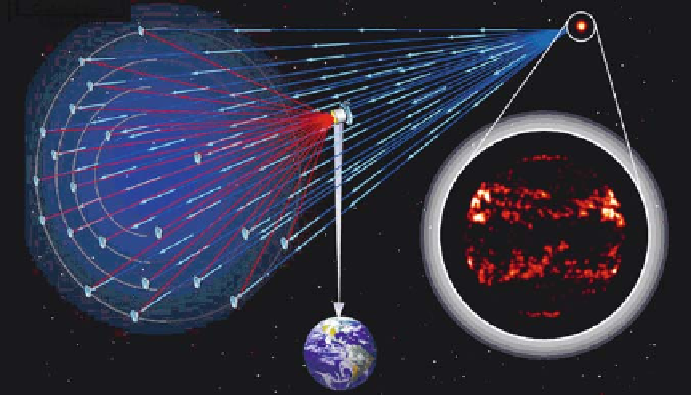Environmental Engineering Reference
In-Depth Information
Fig. 11.1.
The Stellar Imager mission (image credit: NASA)
5 km. The baseline microsat is 3-axis stabilized with an earth-pointing body-
mounted high gain antenna and an articulated solar array. The microsats
will have limited inter-mirosat communications to help maintain prescribed
distances each to the others.
A mission to Enceladus
is one of several options NASA is considering for
an outer planets Flagship mission that would be launched no earlier than
2015. Several types of missions are being studied for Enceladus. One is where
a lander is sent down to collect samples. The lander would use autonomous
hazard avoidance to land safely. The autonomous hazard avoidance would use
a descent camera to identify and avoid rocks and blocks of ice in order to
land at a relatively smooth and flat location. The lander would perform its
observations, collect the samples, and analyze them, while the orbiter contin-
ues to orbit Saturn, beyond communication range. When the orbiter returns
8.22 days later, the lander would uplink its data to the orbiter and conclude
its mission.
The Titan Explorer with Orbiter
mission will map Titan with a high-
resolution radar and study the atmosphere, prebiological chemistry, and po-
tential life. The mission will include an orbiter to relay communications from a
module that will land on the surface. The orbiter will also perform aerocapture
to test the atmosphere.
The James Webb Space Telescope
(JWST) mission is the replacement for
will be developed as an integrated system that will provide seamless operations
from science proposal to data distribution, with a minimum of interfaces.
The spacecraft will incorporate greater onboard autonomy, executing a high

